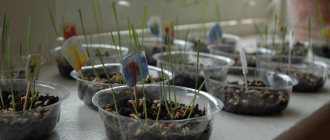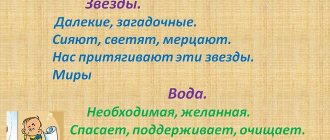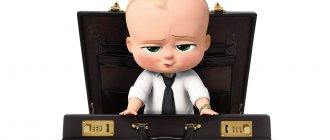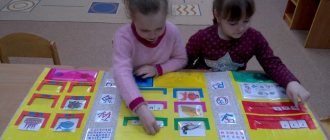Games for schoolchildren during a rhythm lesson.
Vasilenko Olga Mikhailovna,
Rhythmic teacher,
MAOU "Gymnasium No. 8", Angarsk
Musical and rhythmic games for schoolchildren
These musical and rhythmic games will be useful to rhythm and music teachers, choreographers working with children's groups of primary education.
Emile Jacques-Dalcroze (the founder of rhythm) proved that it is possible to translate musical rhythm into plastic movements of the human body, understanding that the rhythm of music is closely related to the motor, muscular reactivity of a person. Dalcroze formulated the purpose of his system as follows: “The purpose of rhythm is to lead its followers to the point that at the end of their studies they could say not so much “I know” as “I feel”, and above all create in them an irresistible desire to express themselves, that can be done after developing their emotional abilities and their creative imagination.”
Music literacy needs to be explained in an accessible way, so that it is interesting for gifted children and understandable for those who do not study music. Children learn musical time signatures by jumping over a rope that moves according to a given musical time signature. I propose to learn the duration of pauses through the musical game “morozko”, after which, apply and consolidate the acquired knowledge in a dance etude. We study such a topic as: “Introductory and closing chords” in the games: “station” and “snowballs”. The “musical phrase” is very clearly perceived through games such as “pass the ball” or “toy store”; a lighter version of these games helps to learn the strong and weak beats of the beat. Children love to play the musical game “butterfly spiders” and “locomotive”, and the teacher, meanwhile, explains the dynamic shades in the music and the musical tempo.
Topic: MUSICAL PHRASE
Goal: through the game, to let students feel the “musical phrase”, its beginning and end.
"Ball" 1st grade
Children stand in a circle, one in the middle with a ball.
On “one” - the ball is thrown to any of the children
On “two” - the ball is returned to the leader
On “three” - the ball is thrown clockwise to the next
On “four” - the child passes the ball to his neighbor on the left
At “five” - the child with the ball stretches out his hands with the ball (teases the one who is in - presses the ball to himself
At “seven, eight” they change places. End of sentence.
The game continues from the beginning. If the same children go to the center, you need to add one person, then everyone will visit the center. The game can be complicated, including two or three balls. The main thing is to introduce children to synchronicity.
“Toy store” 1-2 grades.
Children are invited to come up with any shapes (toys, animals). The poses should be stable, not lying down, since at the beginning of the phrase (at “one time”) you need to take the first step. The teacher appoints a “buyer” (if there are many children in the class, then several). Task for the “buyer”: you can only take six steps around the “toy store”, on the count of “seven” he touches the figure he has chosen, on the count of “eight” he stands next to the chosen figure, repeating it exactly. The child who was touched (bought) becomes a “buyer” and on the count of “one” begins his steps through the “toy store”.
The musical tempo can be moderate for steps or fast for jumps. The teacher can complicate the task by offering to move in different ways (penguins, foxes, bears, old men, etc.)
"Conductor" 3rd grade
To start playing, you need to learn a four-quarter rhythmic pattern.
“one two three pause” - four times. - Claps or three jumps in place.
“one two three four” - four steps forward
“one” - “two” - (half) - two long claps
“one two three four” - four steps back
“one” - (whole) - one long clap.
After the children remember the rhythm, we divide them into four teams. The role of the conductor is played by the teacher, then by anyone interested. The essence of the exercise is for the teams to carefully follow the conductor’s hands and perform the learned rhythm only by the command indicated by the conductor. The “conductor” has a lot of options; you can change performers for each phrase, or several phrases per team.
Topic: Improvisation on a given topic.
Goal: compose a “polka” excerpt and dance it in a ready-made dance etude.
"Troika" 3rd grade
Children line up in threes in a circle. The teacher explains how to move in a circle while maintaining “threes” (those who take shorter steps in the inner circle, longer ones in the outer circle). A moderate tempo polka is good for this exercise.
Introduction: hands on the belt, legs 6th position.
(1-2 eights) We perform six jumps in a circle and three stomps in place - 2 times. At the end of 2 “eights”, the outermost of the three turn to face their central one.
(3-4 eights) the outer children perform six claps and three taps - 2 times, and the central child performs any “polka” movements according to the musical phrase and tempo. At the end of the 4th "eight", the central one changes at will either with the one on his right or with the one on his left. After the change has occurred, another child becomes central and the game is repeated.
"Repeat after me"
We divide the children into two equal teams. We line them up along the edges of the hall.
Introduction – children stand with their hands on their belts, feet in 6th position.
1 “figure eight” - the first children come out from both sides to the middle of the hall (jumps, polka step)
2 “eight” – the one on the right shows movements for one musical phrase
3 “eight” - the one on the left repeats the same movements
4 "eight" - they turn to their teams, who must repeat the same movements with a wave of their hand.
Then the exercise is repeated, at 1 “eight” those who stood second go to the center, and the first go to their team and stand last. When the entire right column had been in the place of the one who came up with the movements, it was the turn of those on the left to come up with the movements. You can divide them into girls and boys and give the exercise a competitive moment, taking into account the quality of the movements performed and the synchronization of execution.
Theme: MUSICAL SCALE. 4th grade.
Purpose: To give students the concept of musical sizes and to feel their differences.
At the preparatory stage, the teacher suggests conducting, and then clapping two quarters, three quarters, four quarters. We discuss their similarities and differences. During the discussion, we find out that the beginning is “one”, there is always a strong beat, and then the slices are added accordingly. We invite you to come up with your own rhythmic pattern. If the rhythmic pattern is created correctly, the class repeats it several times.
After this we move on to the practical part. Using two jump ropes. Jump ropes are stretched on the floor parallel to each other, at shoulder distance. Always on the first beat(s), the ropes will be connected, and the remaining slices will remain open. Thus, students must calculate their jumps so as not to step on the jump ropes.
Example of "two quarters": starts inside the ropes, feet together.
“one” - jump legs apart, “two” - jump on one leg, or two together.
Three-quarters example: Starts inside the ropes, feet together.
“one” - jump legs apart, “two” - jump on one leg, “three” on the other.
Four-quarter example: Starts inside the ropes, feet together.
“one” - jump legs apart, “two” - jump on one leg, “three” on the other, “four” jump legs together, you can add half a revolution or a full revolution inside the jump ropes.
For a given rhythm, you can come up with a lot of combinations, even including an element of gymnastics.





